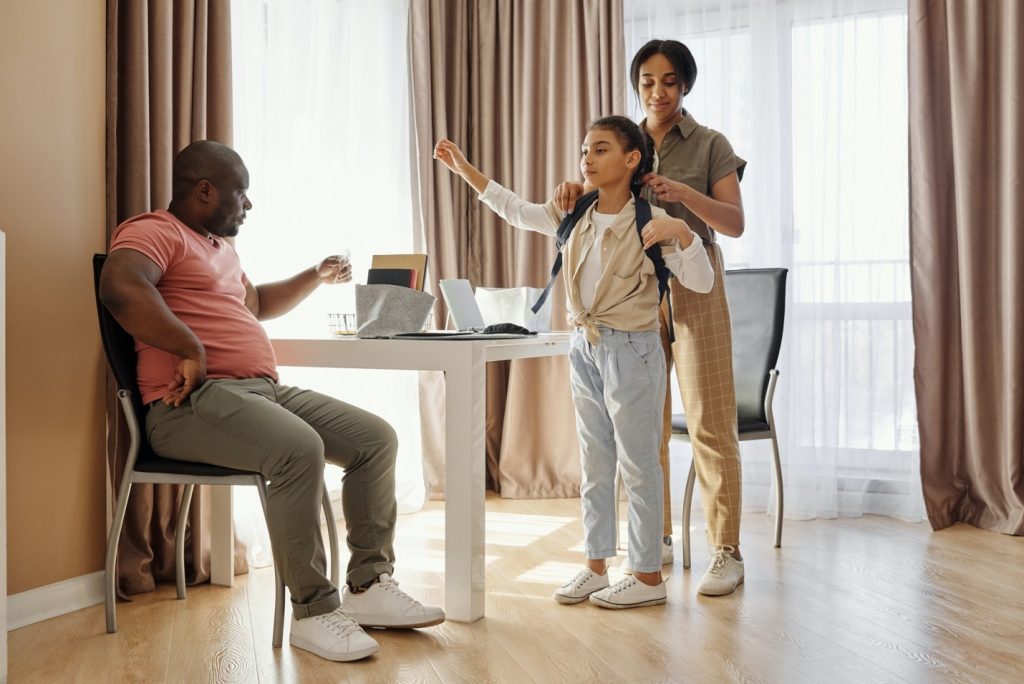
As we slowly begin to transition back into our pre-covid lifestyles and being with others, it is normal for you and your kids to feel nervous about this big shift. The Family Care Office has compiled some tips on how to help your kids transition back into more socially active situations.
Dealing with nervousness around social engagement
Although some children continued to attend school in-person over the past year, many children have not been able to be in such situations since the beginning of 2020. It is normal for kids to feel anxious or unprepared to re-engage in face-to-face social situations. In this case, parents can assist by setting up smaller social interactions with a few friends, either outdoors or indoors to help with the adjustment. If safe and permitted, attending small-group extracurricular activities where children can more freely interact with others, compared to an in-school setting, while participating in something they enjoy can help with easing this nervousness as well.
Furthermore, reminding your children about past situations where they were successfully able to adjust to new situations can help build their confidence. For example, ask them about how they made new friends when they first started school or how they adjusted after joining a new extracurricular club.
Here are some tips on easing yourself and your kids back into regular activities
- Create an initial transition plan. Ask yourself questions like “how much time will I be spending at home now that quarantine has ended” and “what kind of social events will myself and my family be attending” and create an appropriate plan that takes these elements into account. This plan will help you and your family strike a healthy balance between social interactions and time needed to yourself.
- Incorporate elements of your covid lifestyle into your routine. Some families have created traditions or social activities together while staying at home over the past year. Holding onto some of your favourite activities while returning to normal can help everyone with this transition while keeping a special family bond.
- Communication is key. Make it a habit to ask yourself and your children how they are feeling at the end of the day, especially on days when they experience new social interactions. It is easy to feel stressed or overwhelmed and helping each other reflect on the day can help relieve some of these anxious feelings. Here are some mindfulness activities you can practice with your children.
Difficulties adjusting?
Staying at home has led to previously packed schedules being cleared up. Kids have had a lot more free time than usual to do whatever they wanted without other obligations. Transitioning to the new norm can mean that kids may be resistant to returning to their active routines. If your child previously had multiple obligations, such as numerous after school activities, try to ease into them one at a time, if possible, and keep an eye out for your child’s reactions to these settings. Work-life balance is hard to achieve even as an adult, so it is important that parents help their kids strike this balance successfully to prevent them from becoming too overwhelmed. Creating new routines that incorporate good sleep schedules, regular meals, and sufficient breaks can help kids develop more structure to their daily lives. If you child is having difficulties getting into a routine, check out this article for five tips to help them adjust.
With positive reinforcement and support, your kids will become confident in making this transition back to normal as well as be more adaptable to future transitions. This change can also help build the skills needed to navigate upcoming challenges in their lives, ultimately becoming a learning experience for us all.